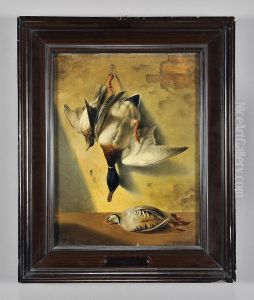Francesco Inganni Paintings
Francesco Inganni was an Italian painter born in Brescia in 1794. His artistic journey is deeply rooted in the tradition of the Brescian school, and he is particularly known for his religious and historical paintings. Inganni's style was influenced by the neoclassical movement, which was prevalent at the time of his artistic development. This movement sought to revive the styles and principles of classical art from ancient Greece and Rome.
Inganni received his early art education in his hometown before moving to Rome, where he had the opportunity to study the works of the great masters. His time in Rome was instrumental in shaping his approach to painting, as he absorbed the techniques and motifs that would later be evident in his own work. Upon returning to Brescia, he became an influential figure in the local art scene, contributing to the cultural life of the city through his creations and teachings.
Throughout his career, Inganni was commissioned to produce a number of works for churches and other religious institutions, which was common for artists of his time. His paintings were appreciated for their clarity of composition, harmonious color schemes, and the serene and idealized depiction of figures, all characteristics of the neoclassical style. Inganni's works can be found in various churches and public buildings in and around Brescia, and they continue to draw the attention of art enthusiasts and historians.
Despite his success, Inganni did not gain the same level of international fame as some of his contemporaries. Nevertheless, his contribution to the Italian art world of the 19th century is significant, and he is remembered as a key figure in the cultural heritage of Brescia. He passed away in his birthplace in 1851, leaving behind a legacy of art that continues to be studied and admired for its beauty and historical value.

